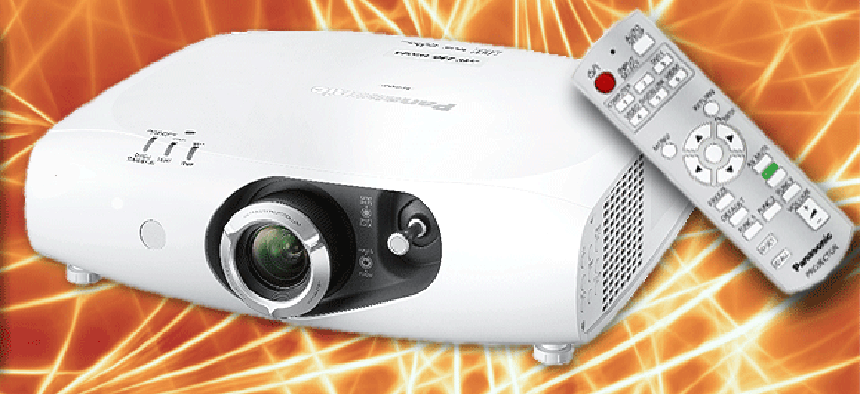Bright idea: Projectors that use lasers, not light bulbs


Connecting state and local government leaders
Panasonic's new Solid Shine series replace projectors’ biggest weakness -- the lamp -- with a laser-LED light source.
Every projector that GCN has reviewed over the past 10 years has come with one major Achilles’ heel. It didn’t matter if it was a DLP or LCD model, or designed to be portable or hard-mounted inside an installation. Even rugged military models had the problem: They all relied on lamps, which are basically glorified, high-tech light bulbs.
Projector technology has advanced over the years, but fundamentally, it’s still the same as the old phantasmagoria devices. A light shines through an image, which is projected onto a wall or a dedicated screen. And the bulbs that make that light are fragile, especially when compared with every other component. All those fans and filters inside projectors are there for one purpose: to protect the bulb.
And even with those protections, projectors still wear out because of the bulb, which is always an expensive replacement. In fact, bulb life can be tracked and plotted according to known patterns. Bulbs are generally best in terms of lumens — the amount of raw light power they generate — right out of the box. After about 10 hours of use, they lose some of their brightness, then hold steady for about 200 hours, then drop again and hold steady till they expire. It’s rare that a bulb can go for more than 3,000 hours without being replaced, and that’s sometimes a stretch.
Panasonic System Communications Company of North America is among the companies that have decided that it’s time to get rid of the bulb altogether. The company’s new Solid Shine series of DLP projectors use an LED-based laser light source. That means there are no fans and no filters to replace. It also means that when a Solid Shine projector powers up, it immediately goes to full brightness, just like flicking a switch.
The LED/laser light source generates very little heat and is designed for continuous 24-hour-a-day operation. Panasonic says the new light technology will last under constant use for over 20,000 hours. That’s about two and a half years of continuous uptime. And the new light technology has been measured at 3,500 lumens of brightness, making it ideal for almost any lighting environment.
Even LED/laser lights will degrade over time, if slowly. But Panasonic added a sensor to all Solid Shine models that constantly monitors the lumens produced by the source. As the light degrades, the projector will automatically compensate by changing the white balance levels.
Two models of the new lampless projectors, the PT-RZ370U and PT-RW330U, are available right now for $5,899 and $4,599, respectively. The PT-RZ370U offers a 1080p display and a 10,000-to-1 contrast ratio. The PT-RW330U has the same contrast ratio, but has a widescreen WXGA (1,280 x 800) display.
Two more lampless models, the PT-RZ470UK/UW and PT-RW430UK/UW, will be available in March for $6,799 and $5,499. They have the same resolutions as the models out now, but increase the contrast ratio to 20,000-to-1 for really precise display capabilities. All projectors in the Solid Shine lineup come with a three-year warranty.




